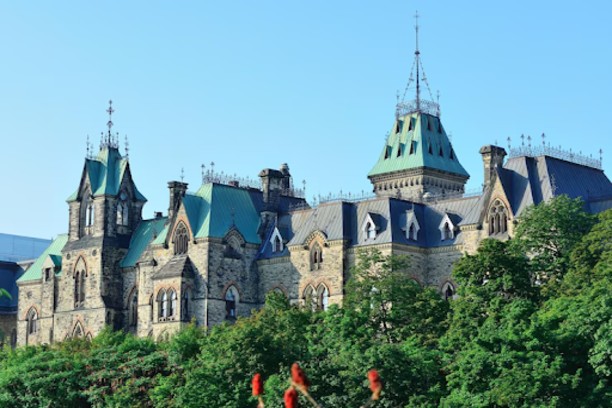

Ontario’s colleges and universities are facing a financial crisis due to a sharp decline in international student enrollment caused by new federal policies.
Ontario’s colleges and universities are facing a serious financial crisis due to a sudden drop in international student enrollment and changes in government policies. Institutions such as Algoma University, Cambrian College, and Sault College are struggling to manage significant revenue losses, leading to program suspensions, staff reductions, and financial cuts.
For many years, international students have been a vital source of funding for Ontario’s educational institutions. With tuition fees for international students being higher than those of domestic students, their enrollment helped support various programs and operations. However, recent changes in Canadian federal policies have made it harder for these students to study in Canada.
In 2024, the government capped the number of international student visas, cutting the number of new students by nearly 50%. This abrupt shift caught schools off guard, leading to a severe loss of expected revenue. Additionally, changes to Post-Graduate Work Permits (PGWPs) mean that many programs, especially business-related ones, no longer offer this work permit option, reducing international students’ interest in those courses.
As a result, schools like Algoma University in Sault Ste. Marie saw a 50% drop in international enrollment. This cut their projected revenue from $264.6 million in 2024 to just $123.5 million in 2025. Other institutions are experiencing similar declines, making it difficult for them to stay afloat financially.
In an effort to manage the financial strain, Ontario’s colleges are suspending low-enrollment programs and making significant budget cuts. Here’s a closer look at some of the steps being taken:
Algoma University:
Algoma University has suspended five programs with low international student enrollment for 2025. Interim President Donna Rogers clarified that these cuts were essential to ensure the university’s survival, not a reflection of the quality of the programs. While the university has avoided layoffs, staff contracts have been reduced, and summer courses have been canceled.
Cambrian College:
Cambrian College has seen a $40 million revenue drop. As a result, the school eliminated 22 positions and suspended 10 academic programs. Although no layoffs have occurred, some staff have been reassigned to other roles.
Northern College:
Northern College is facing a $6 million deficit for 2024, with a projected $12 million deficit in 2025. The school has reduced its full-time faculty by offering early retirement packages, bringing the number of professors down to just 70 across its campuses.
Sault College:
Sault College is also suspending several programs. The college’s president, David Orazietti, is considering options like lobbying for more government funding to address the financial crisis.
The cuts and program suspensions are having a significant impact on faculty and students alike. Staff morale is low, with reduced contracts and cancellations of courses affecting the work environment. Many faculty members are uncertain about their future, and some have opted for early retirement.
For students, the situation is equally concerning. Domestic students now face greater competition for spots in limited programs. International students, who contribute to the cultural diversity of campuses, will be fewer in number, impacting the overall learning environment.
Local economies are also feeling the consequences. International students contribute to the local economy through spending on housing, food, and services. With fewer international students, businesses in areas like Sault Ste. Marie and Sudbury may suffer. Additionally, suspending programs related to Post-Graduate Work Permits could worsen labor shortages in fields like business and technology.
The financial crisis in Ontario’s colleges and universities stems from several factors. The institutions have long depended on international student tuition to subsidize costs, especially since domestic tuition rates have remained frozen. The Canadian government’s recent decision to cap international student visas and limit PGWP eligibility has caught schools off guard. Meanwhile, global competitors like the UK and Australia are offering more favorable conditions to attract international students.
In response to these challenges, schools are focusing on restructuring their programs and diversifying revenue sources. Some institutions are cutting low-enrollment programs and shifting focus to high-demand areas like STEM fields. Schools are also advocating for more government funding and reconsidering the domestic tuition freeze to help balance their budgets.
The Ontario government has acknowledged the sector’s struggles, offering some additional funding, including $750 million over five years to fund STEM programs. However, critics argue that this is not enough to address the immediate crisis. The freeze on domestic tuition also limits the schools’ ability to generate additional revenue independently.
To solve this crisis, stakeholders have suggested a few solutions. These include lifting the domestic tuition freeze, reinstating PGWP eligibility for key programs, and increasing base funding for colleges. Some also propose making immigration policies clearer to attract more international students.
The crisis in Ontario’s colleges could reshape the post-secondary education landscape. As enrollment declines, institutions will need to adapt quickly to stay viable. Policymakers, universities, and communities must work together to find long-term solutions that support both domestic and international students.
Having an 'Identity Verified' badge or being 'Identity Verified' simply indicates that an individual has submitted information to complete our identity verification process or we have conducted internal verification using various authorized websites. While this process includes safeguards, it does not guarantee that the person is who they claim to be.
If you encounter any issues with this profile, please report them here. While all consultants who are verified have RCIC ID, we may not have the latest data in terms of their renewal/cancellation/discontinuation of their RCIC ID.
The "Verified Consultants" profiles are created using publicly available information, including data from the IRCC website, official consultant sites, other listing platforms, and social media. Immiperts.com is an independent platform, not affiliated with IRCC or any registered immigration consultants. To update, claim, or remove your profile, please contact us at [email protected].
╳